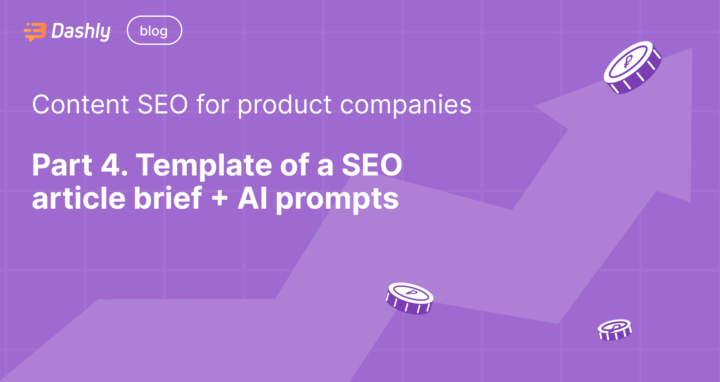Content SEO for product companies: Step 2. How to Choose Keywords for Content Hub Articles

In the previous article, we already examined the potential hub article keywords during its evaluation. By now, you should have a list of verified topics (main keywords) for your hubs.
It’s time to dig deeper and clearly define the keyword groups for individual hub articles. So what articles can we write under this keyword?
Analyzing keyword ideas for the main hub keyword
Let’s take my example of the main hub keyword — lead capture. Enter the keyword “lead capture” into the search and go to the keyword ideas section. There, we see that the query has 2,860 variations 😬
Fortunately, we don’t need all of them.
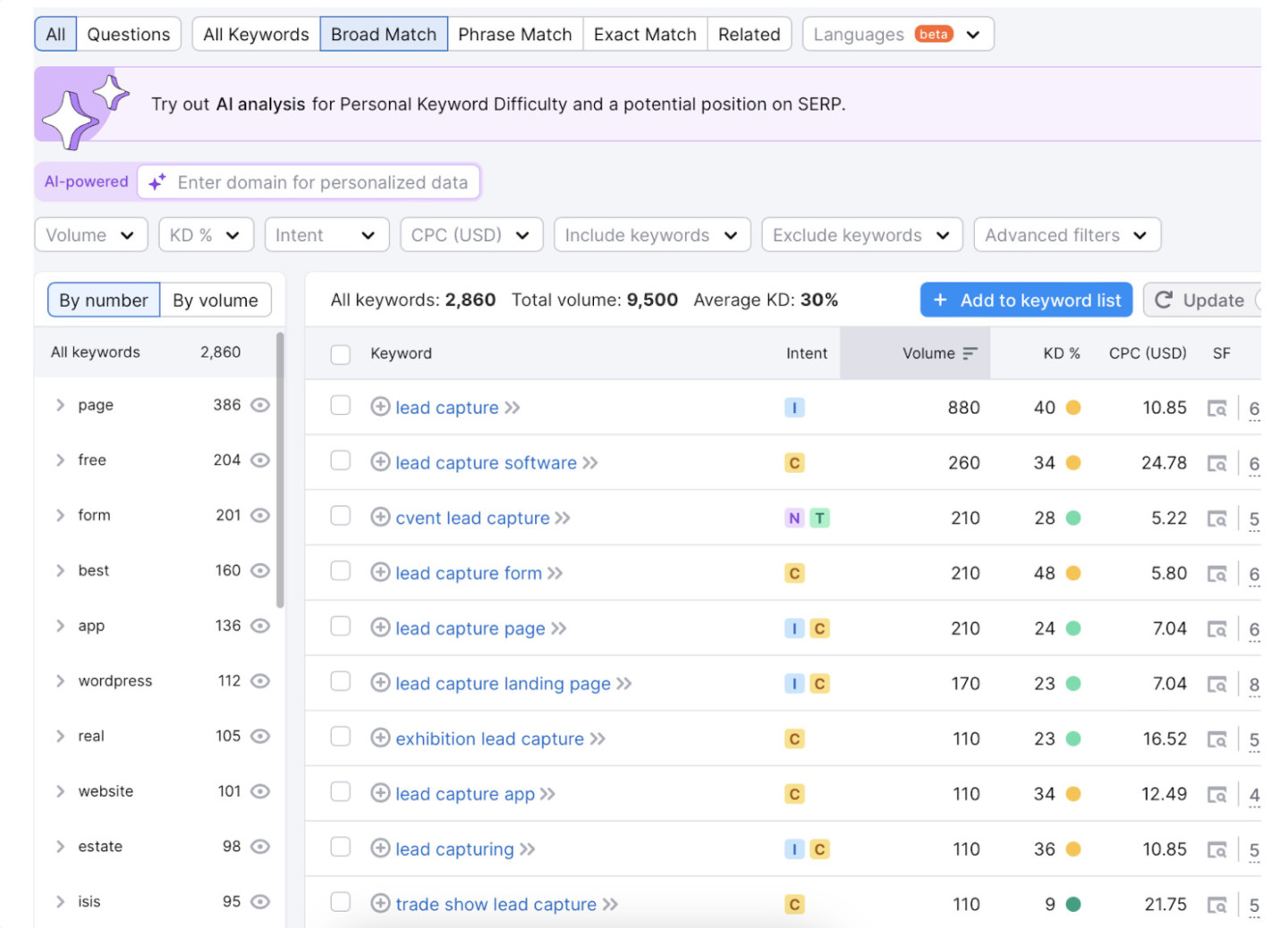
Choose keywords based on your knowledge of your product and target audience. Simply ignore the unnecessary ones.
Prepare a tab in your spreadsheet in advance where you will transfer the keywords.
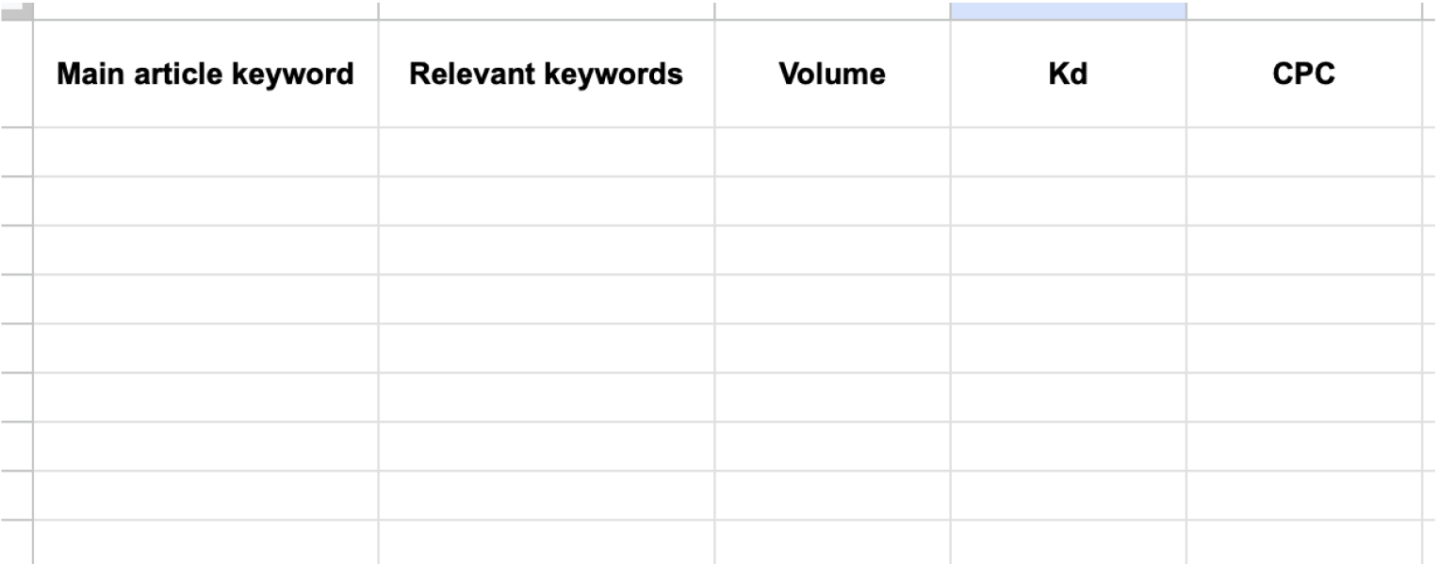
Analyze the metrics of each keyword from the list
Return to Semrush and open each keyword in a separate tab, one by one, that corresponds to your product and target audience.
In my case, the first query is “lead capture.” Essentially, it serves as the main hub keyword.
The main hub keyword usually has a broad meaning, a Volume above 400, and a KD not higher than 40. Additionally, a CPC above $6 indicates that competitors are investing in promoting this keyword, suggesting it has conversions.
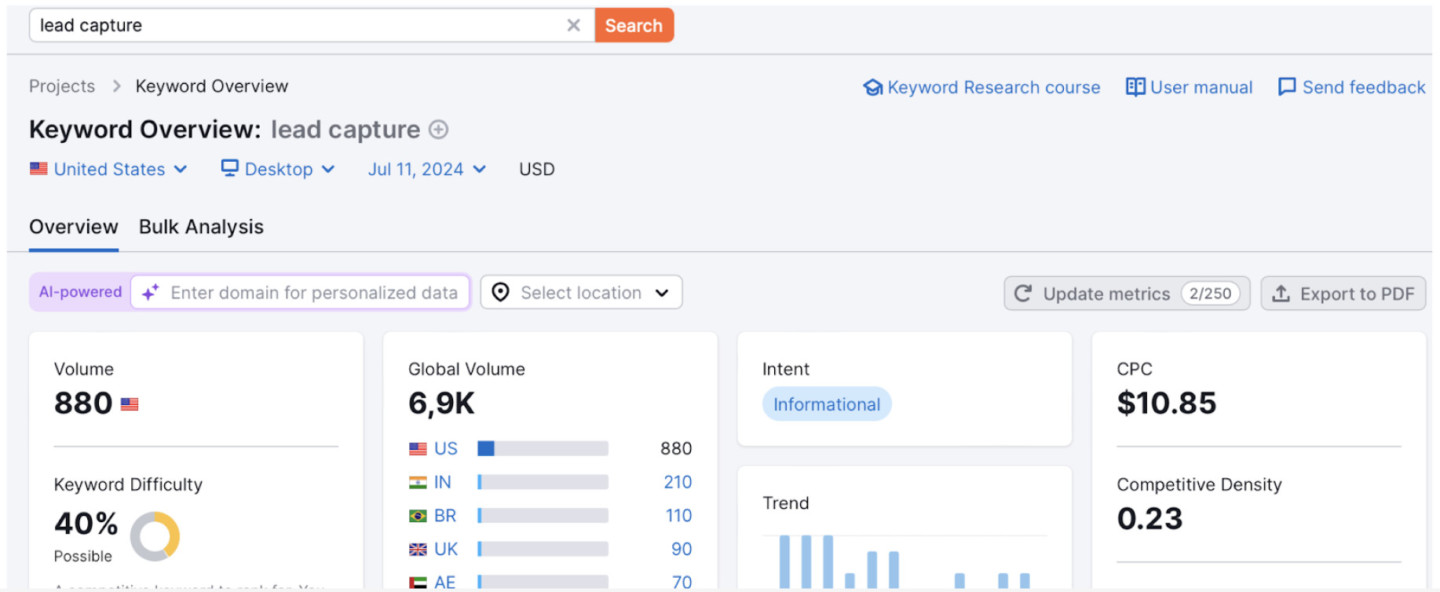
Record the metrics to your spreadsheet.
Check the SERP Analysis for the keyword
Just scroll down this page a little and look at the top 10 Google results.
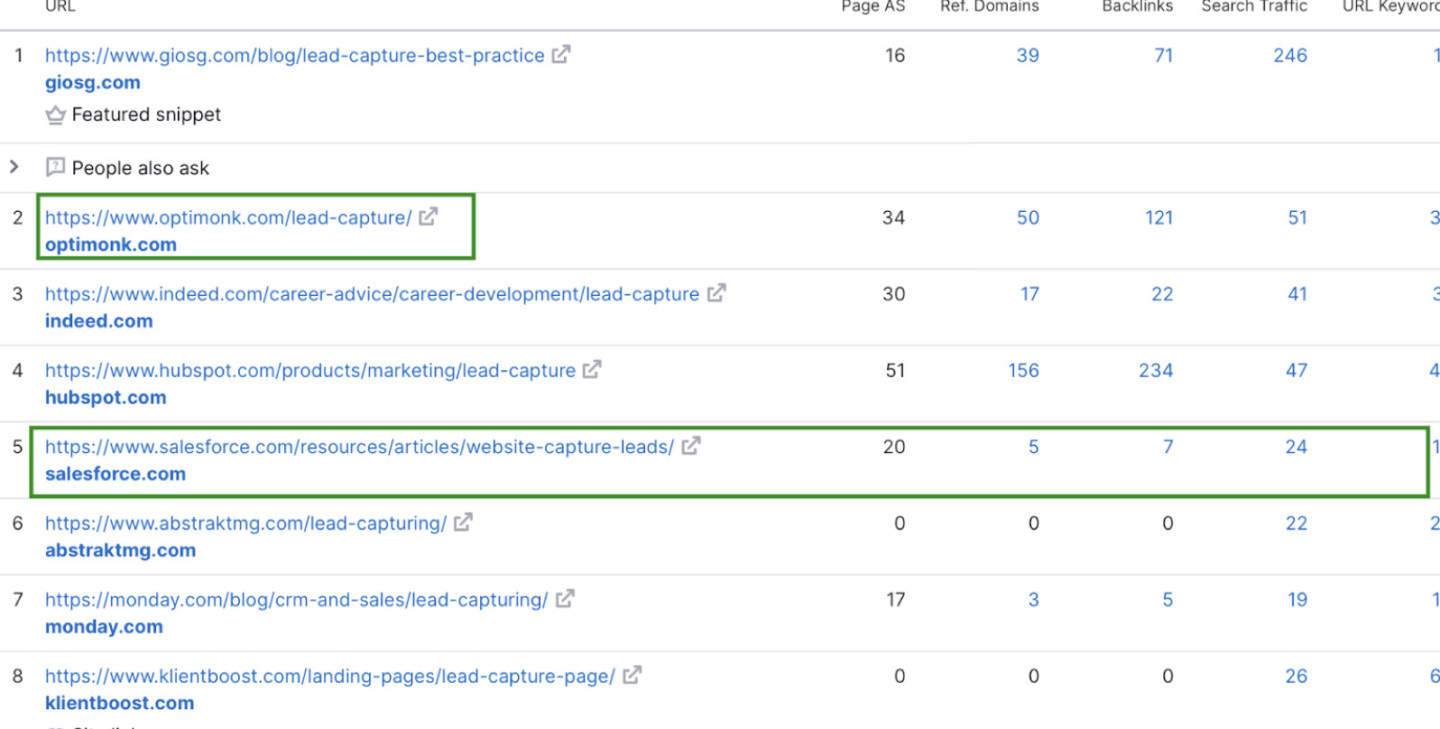
- In the SERP, we see that competitors are writing articles on this topic. Their Page Authority (PA) is low (up to 40). This means I can also compete for a spot in the top 10.
- Looking at the number of backlinks — starting from the fifth position, there are almost none, which means that I can secure these positions with a well-written article.
- Now, let’s look at the URLs of the articles in the results and see that only part of them match the keyword, while the others are phrased as lead capturing. That’s why it is better to take the query lead capturing for review to decide whether it can be the main keyword for the first hub article or if we should stick with lead capture.
It means we should check this keyword as well as others, in a separate tab.
Judging by the numbers, lead capturing is more likely to be one of the keywords for the main article, but not the main one, as it has a much lower Volume.
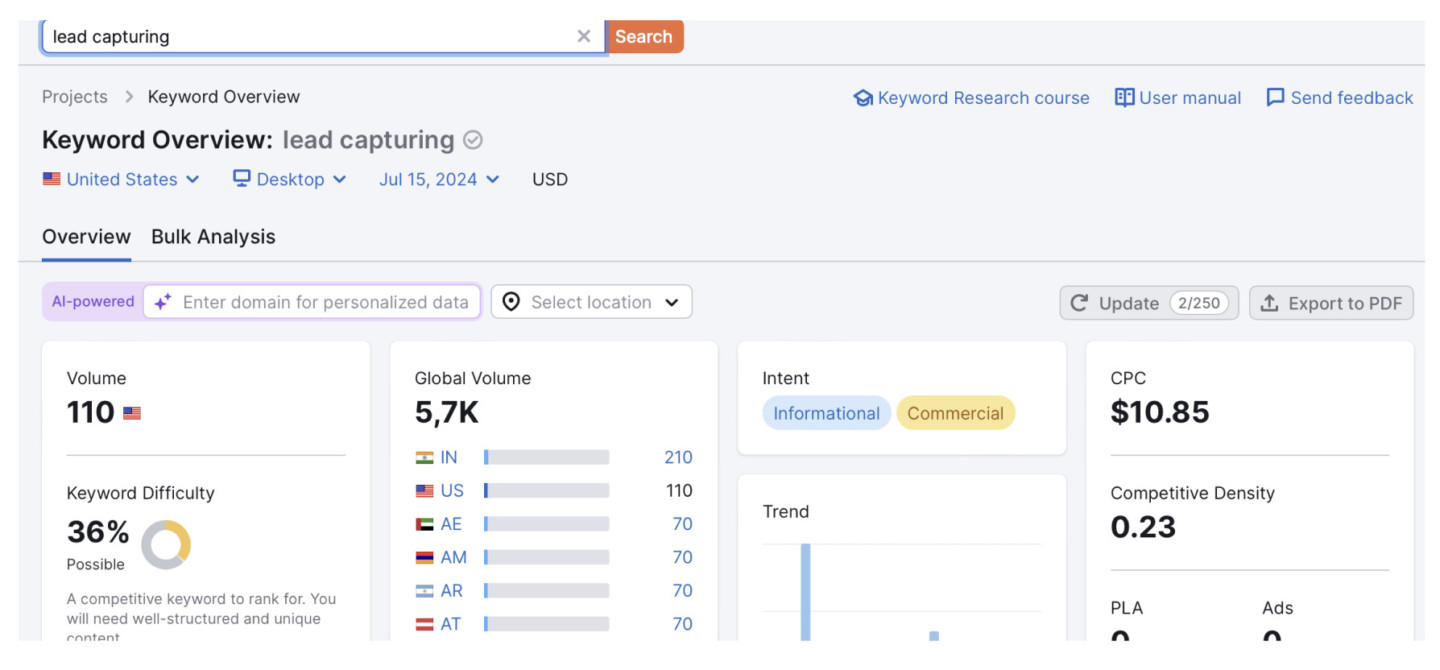
Its SERP is similar to those of lead capture, which confirms the above theory.
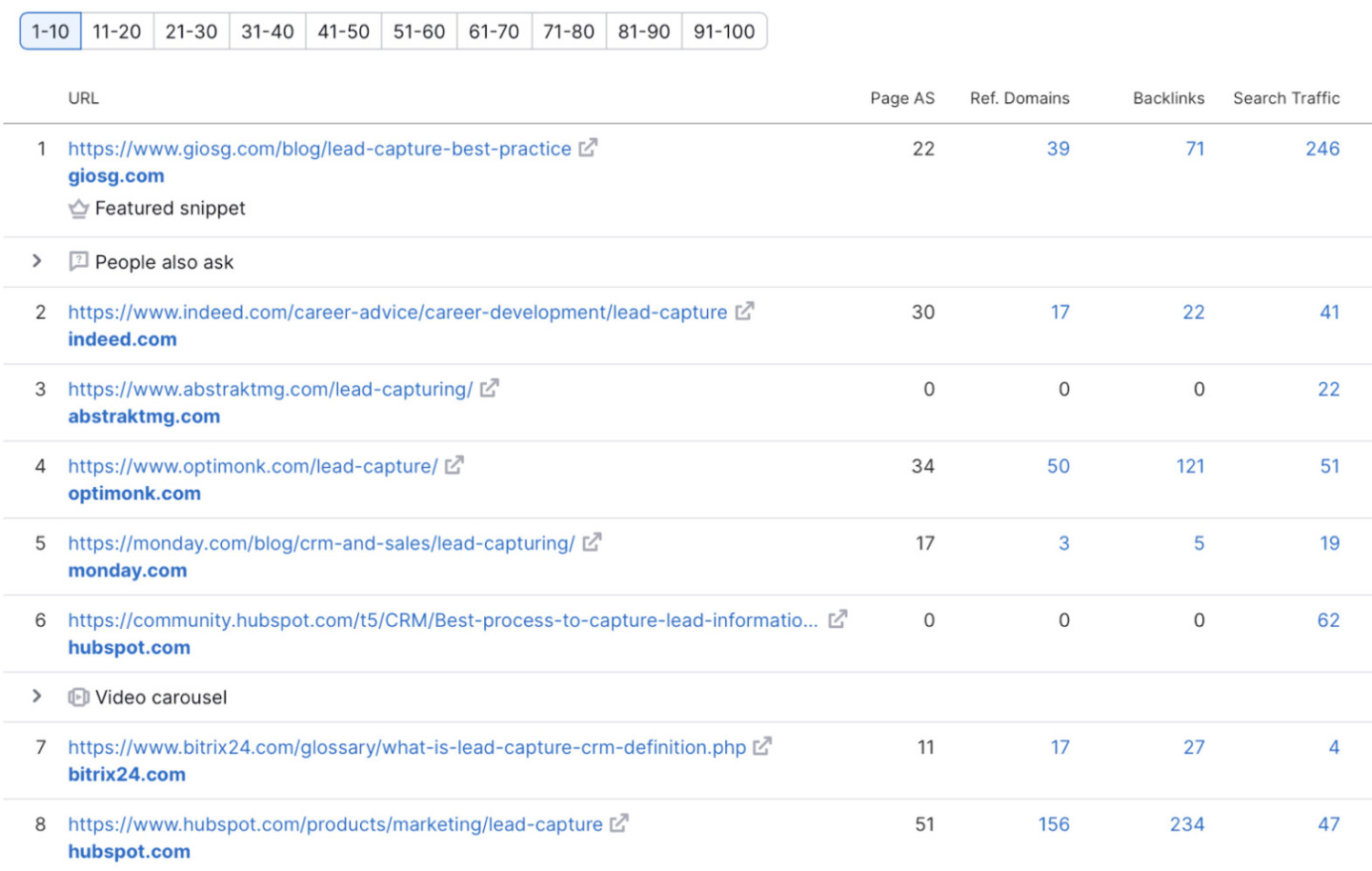
To indicate that keywords belong to the same article, assign them the same background color.

Now we have 2 keywords for the first hub article. Let’s go back to the main list of keywords and open them one by one in separate tabs. What to do when a keyword claims to be a separate article?
For example, I already clearly understand that the next keyword in the main list — lead capture software — is a separate article. But it is still worth double-checking.
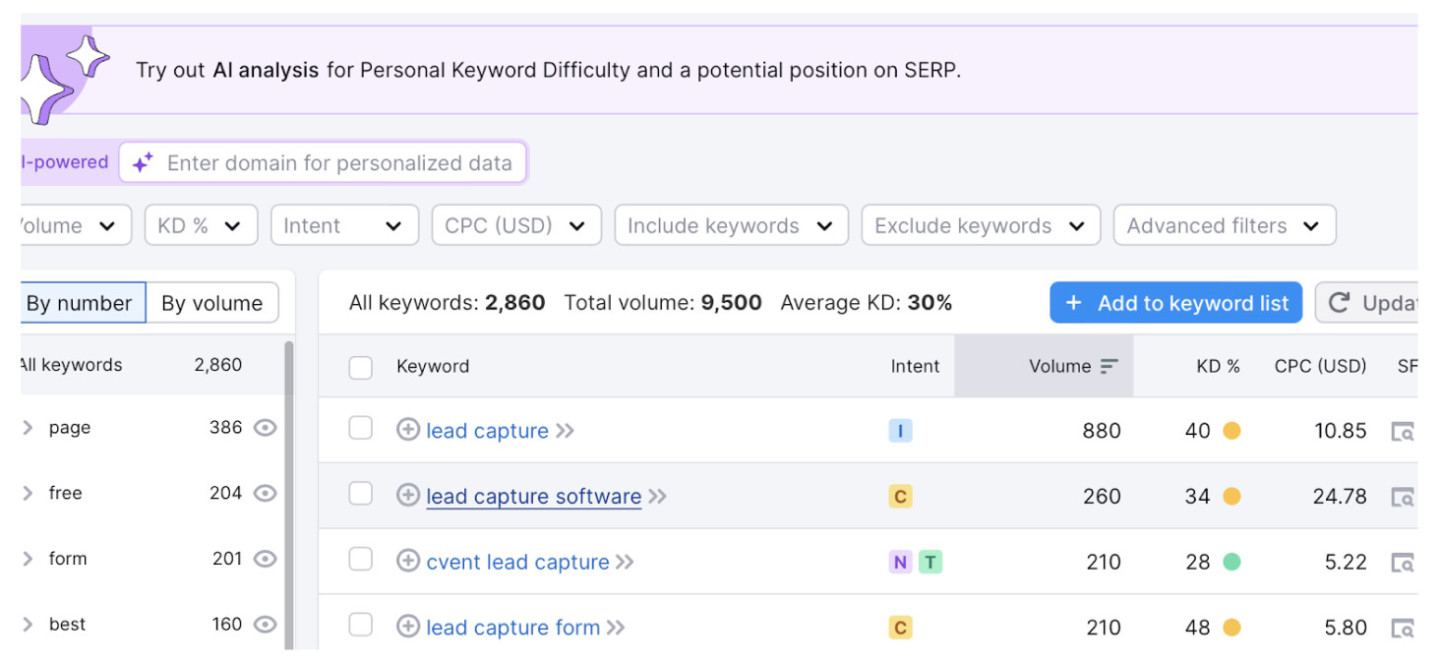
Open it in a separate tab.
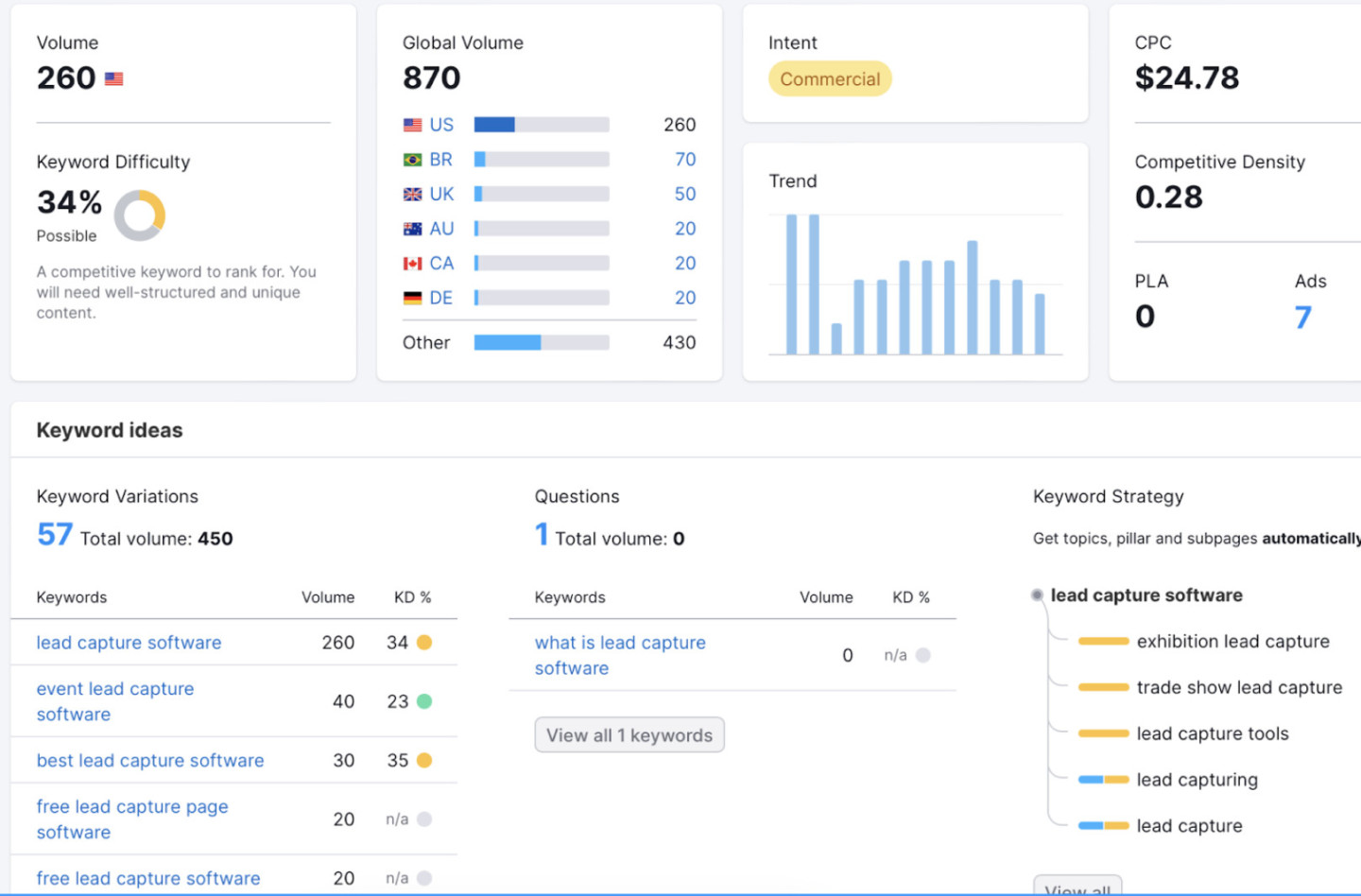
The metrics are fantastic. There are also additional keywords within (Keyword Ideas preview). It’s perfect for an individual article. Record them in your spreadsheet and scroll to the results.
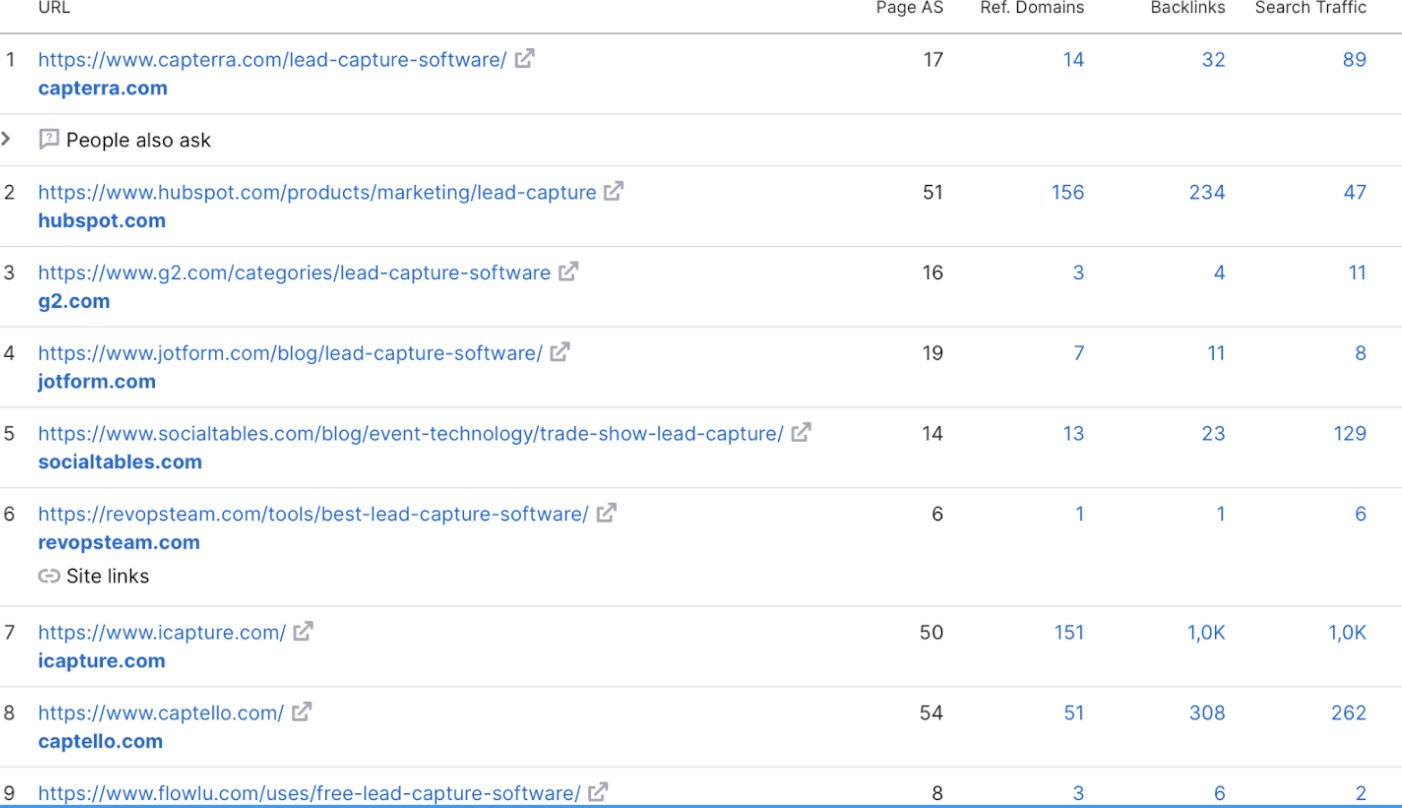
If we have two keywords and their search results overlap by 70%, these keywords should be in the same article. If the top 10 results for two keywords differ, these keywords belong to different articles.
Approximately 70% of the URLs contain our query, which confirms the idea that lead capture software is definitely a separate hub article. Page Authority (PA) and backlinks are also manageable.
Conclusion: lead capture software will be the main keyword for the second hub article.
Now we need to gather the keywords that will be included in this article.
How to gather keywords for each content hub article
For this, scroll slightly up on the same page, go back to relevant keywords, and open them in separate tabs.
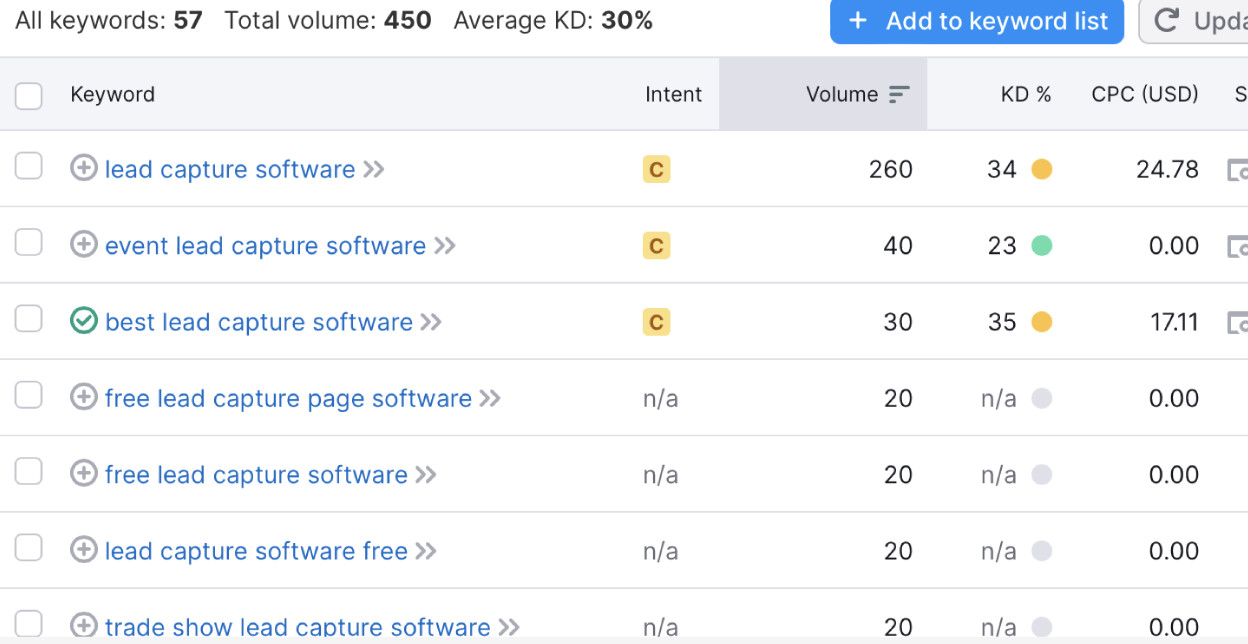
On a screenshot we see a list; take the keywords and their data into the spreadsheet. Personally, I choose those with a Volume of at least 10 and those that are relevant to my product and target audience.

Additionally, search for keywords for the article from competitors
To do this, go back to the previous step on the Overview of the keyword “lead capture software” and scroll down to the SERP analysis section.
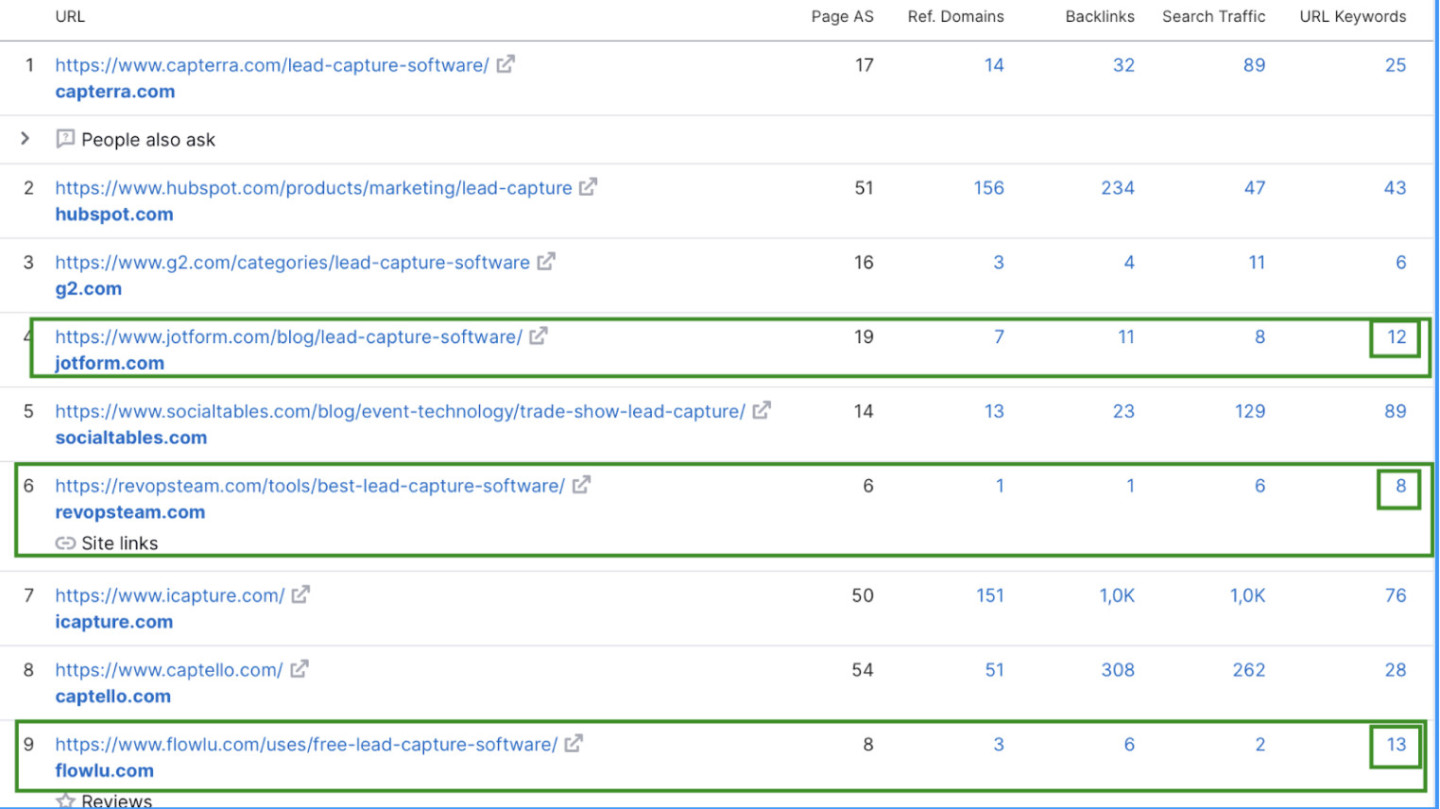
Select the first three articles that have the relevant keyword in the URL. (It’s important to choose articles, not landing pages.) Click on the part of the row with the number of keywords and open it in a separate tab.
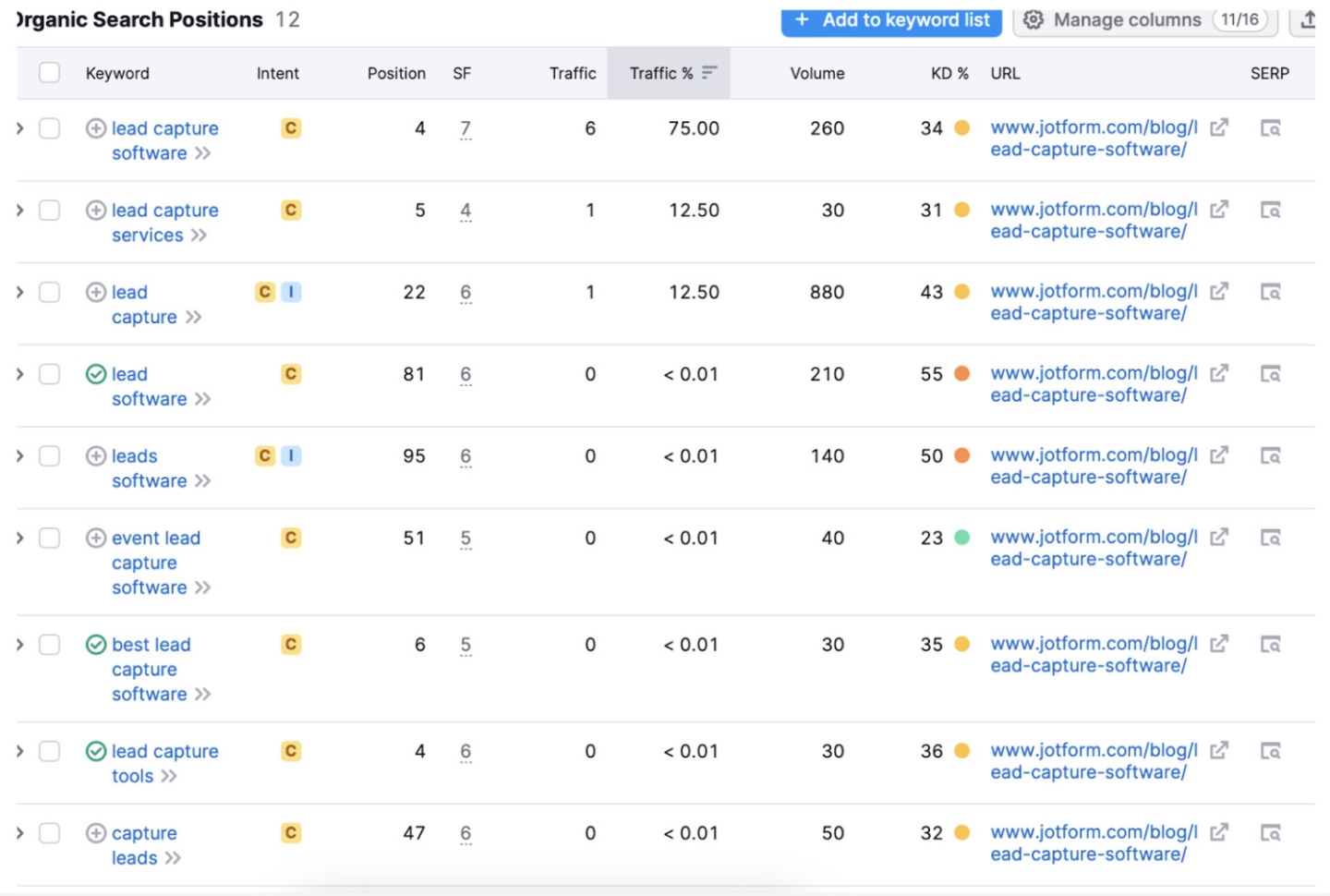
Dive into the keywords again and select the interesting ones. Open each keyword and check the search results to determine which article it should be assigned to. Save all ideas in your spreadsheet.
Go back to the main list of hub keywords for lead capture and repeat the same process with all the keywords that interest you. When you’re done, you can switch to the Related tab and repeat the same steps there.
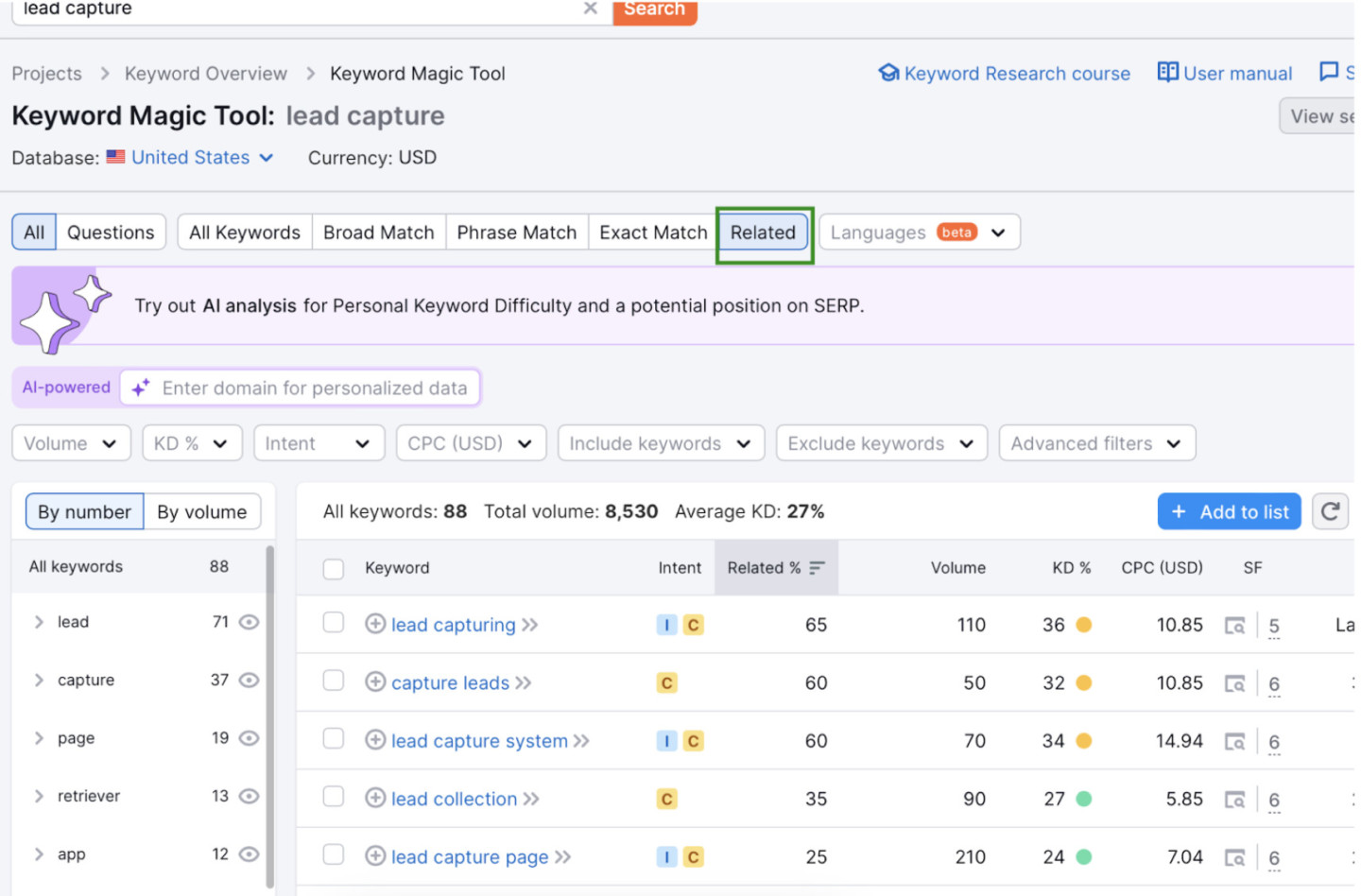
Important: Your hub should have at least 5 articles. The more, the better.
When you have collected and color-coded all the keywords, you need to group them.
Group the keywords in the spreadsheet
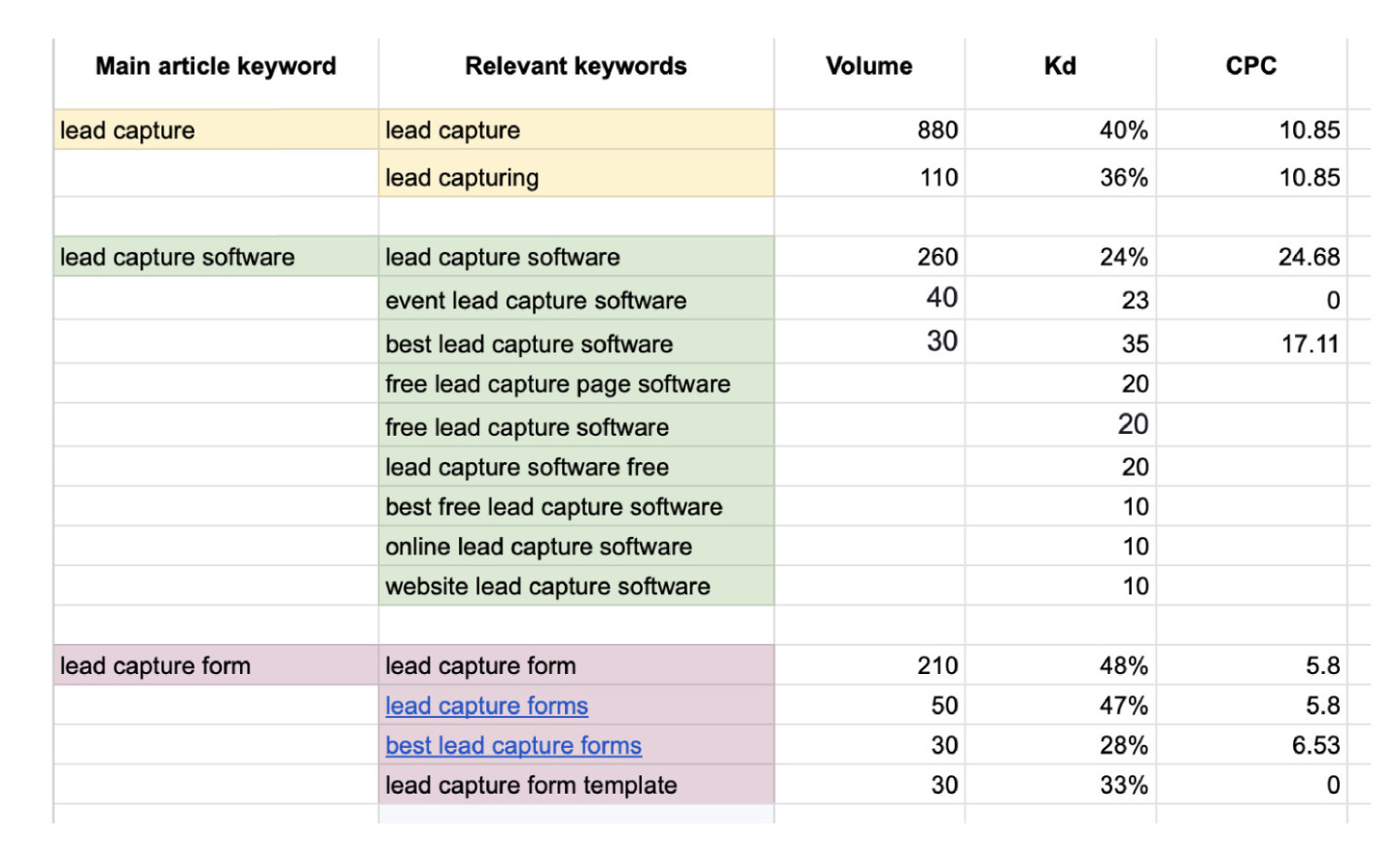
For this, I gathered all the keywords by the articles they belong to and sorted them by Volume.
Important: The keyword with the highest Volume is the main keyword of the article.
Congratulations, you are now ready to forecast the traffic that your hub will bring. We will cover this in the next part of the guide.
Read also: Discover the Best 15 Automated Sales Funnel Builders for 2024






